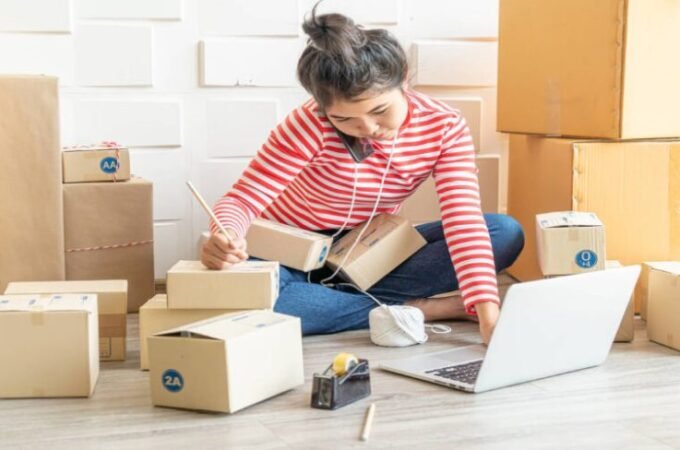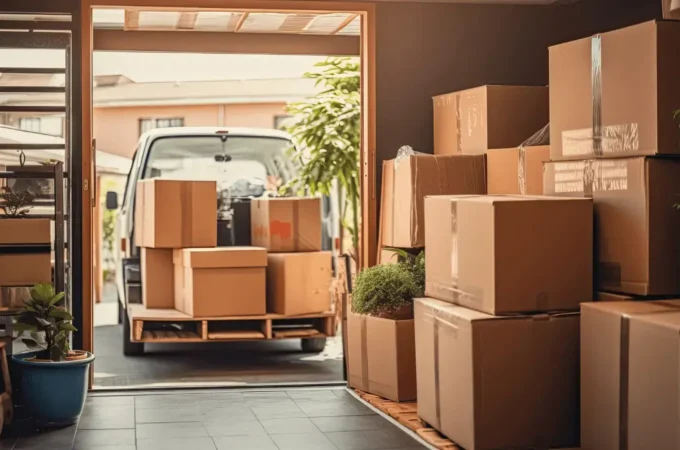
10 Practical Ways To Organize Your Home Before a Move
Preparing your home for a move starts with intentional organization. Begin by decluttering each room—donate, sell, or discard items you no longer use. Label boxes clearly by category and destination room to simplify unpacking. Use color-coded tape or stickers for quick identification. Prioritize packing non-essential items first and leave daily necessities for last. Keep important documents and valuables in a separate, secure location. Use clear bins for items you’ll need immediately in your new home. Disassemble large furniture in advance, and take photos of electronics before unplugging. Staying organized helps reduce stress and ensures a smoother, more efficient moving process.
Table of Contents
ToggleWhy Pre-Move Organization Matters
Moving isn’t just about transferring boxes from one place to another—it’s a life transition that can feel exciting and overwhelming. Research from Psychology Today reveals that relocating ranks alongside events like divorce and job loss in terms of stress. There’s no question, then, that taking a little extra time to plan and organize can dramatically impact your emotional well-being. Pre-move organization can help prevent lost or damaged possessions, keep you on track with deadlines, and create a crucial sense of control during significant change.
Another vital aspect of an organized move is partnering with trustworthy professionals. Locating reliable Los Angeles movers makes your checklist not just shorter but smarter. Experienced movers can reduce your workload, help guide your timeline, and offer advice on packing materials and logistics. Proper support means that even if something unexpected happens—like a sudden rainstorm on moving day—you’re ready with backup solutions and can protect your valuables from harm. In my experience, organization goes hand-in-hand with peace of mind.
Make a Moving Plan
The best moves start with thorough planning. Begin the process at least one month in advance to give yourself space to tackle tasks bit by bit. Whether you prefer a physical binder or a digital app, keeping all your lists, receipts, and vital moving information in one place will save you from frantic searching later. Your plan should outline every step, from scheduling utility shut-offs and turn-ons to updating your mailing address and notifying your insurance company.
Setting up a calendar with reminders ensures no task sneaks up on you. Reserve rental vehicles or professional moving services early to avoid last-minute shortages, particularly during busy months. It’s also smart to block off time to visit local donation centers or arrange bulk trash pickup. The beauty of a strong moving plan is that it makes each day’s ‘to-dos’ manageable—an antidote to feeling overwhelmed by the scope of an entire move.
Sort and Declutter Early
Decluttering is often the most eye-opening—and freeing—part of prepping for a move. According to the New York Times Moving Guide, early decluttering saves on moving costs since most companies charge by weight or volume. Start by sorting your home one drawer, closet, or cabinet at a time. It’s easier to let go of things you rarely use when you have weeks, not days, to decide.
An efficient approach is the four-box method: designate boxes or laundry baskets for “keep,” “donate,” “sell,” or “toss.” Items with sentimental value deserve careful thought, but don’t let nostalgia clog your space. If you haven’t used something in a year, chances are you won’t miss it. Decluttering isn’t just about lightening your physical load—it also brings clarity and relief, making it much easier to organize what matters.
Gather Essential Moving Supplies
Once you start packing, you’ll quickly discover that having quality supplies can mean the difference between an orderly process and chaos. Gather an ample supply of sturdy cardboard boxes in various sizes, as stacking heavy books in a large box can make it impossible to lift. Heavy-duty bins work best for valuables, delicate electronics, or anything you want to protect from moisture.
Assemble other must-haves: bubble wrap, packing paper, tape, markers, and labels. Bubble wrap is non-negotiable for breakables like glassware and dishes, while packing paper protects plates, frames, and collectibles from scratches. Labeling is essential; a black permanent marker works, but brightly colored labels make it even easier to spot which room a box belongs. A supply closet or dedicated packing area helps you keep everything on hand and organized as you go, so you’re not constantly retracing your steps.
Start with Least-Used Areas First
The best approach to packing is starting where you won’t miss things—think guest bedrooms, off-season closets, storage bins in the basement, or shelves in the garage. Tackle these areas first, and you’ll have packed boxes out of the way, making the rest of your home feel less cluttered and more functional as moving day gets closer.
I often recommend the “snowball method”: as you clear out seldom-used spaces, stacking boxes in those same rooms frees up your living areas and keeps walkways clear. Ticking least-used areas off your list early also gives you momentum, which can be especially encouraging for prominent families or people with a lot of stuff to move.
Labeling Tips for Easy Unpacking
Unmarked boxes are every mover’s nightmare. Spare yourself confusion later by investing just a few seconds each time you seal a box. Mark the destination room in big letters, then briefly summarize the contents (“Bathroom – towels & bath mats”). Colored tape or stickers for each room create a foolproof, color-coded system that anyone helping you move can easily follow.
Number your boxes and make a corresponding inventory list. If you need your coffee maker on the first morning in your new home, you won’t have to open every “kitchen” box. Label the sides and the top for visibility, no matter how the boxes are stacked in the moving truck or storage unit. The time you spend labeling on the front end will pay off tenfold when it comes to unpacking.
Keep Essentials Accessible
No matter how organized you are, some necessities should always be within arm’s reach. Designate a few boxes or bags as your “essentials kit”—stock them with the things you’ll need in the first 24 hours after moving: medications, phone and laptop chargers, toiletries, pet food, and a change of clothes for everyone. Include snacks, water bottles, basic utensils, sheets, or an air mattress for the first night if your beds aren’t set up yet.
Remember comforting items for children or pets—a favorite stuffed animal, blanket, or chew toy goes a long way during a transition. Keeping these boxes with you, rather than in the back of the moving truck, ensures that the basics are right where you need them at the end of a long day.
Deal with Hazardous or Special Items
Some items require special attention when moving—hazardous materials, cleaning supplies, propane tanks, and sure batteries often can’t be loaded onto a moving truck for safety reasons. Research your local disposal or recycling guidelines beforehand to handle this task before the rush. Depending on manufacturer recommendations, electronic instruments and large appliances may demand foam padding, special crates, or professional disassembly/accessories. Read up on what your moving company will and won’t transport. Planning is better than scrambling on moving day when a vital item can’t make the trip. Take photographs of specialty items before packing in case insurance claims are needed later.
Involve the Whole Family
Moving is a family affair; involving everyone makes the massive task more manageable. Assign everyone a job, whether taping up boxes, sorting donations, or packing their own spaces. Young children can help decide which toys to keep and add special stickers to their boxes, while older kids get a boost from handling their packing checklist.
Families moving together can create a sense of teamwork and anticipation. Consider turning packing into a game—who can fill a donation box the fastest, or remember to label the most boxes? Including kids in decisions about what to bring or donate empowers them to feel a sense of ownership and reduces moving-related anxiety.
Final Checks Before the Move
In the final days, thoroughly walk through your home—look in every drawer, cabinet, closet, and outdoor shed. Confirm that nothing is left behind and ensure valuables are safely packed and labeled. Double-check that utilities are scheduled to be turned off (old home) and turned on (new house), and that you’ve updated your address with banks, subscriptions, and government agencies.
Make necessary arrangements for pets, and consider booking a babysitter or pet-sitter on moving day, especially if you expect it to be hectic. Suppose you’re moving to or from a building with elevators or loading docks, reserve times in advance to avoid frustration on moving day. Keeping a calm approach and giving yourself extra time helps everything run smoothly.
Resources For a Smoother Transition
The moving process can be intense, but access to helpful guides and expert-driven resources makes all the difference. For emotional support and scientifically backed advice, Psychology Today offers valuable information about minimizing stress and managing life changes. If you’re looking for practical checklists, professional tips, or strategies for a range of moves, then. In that case, the New York Times Moving Guide is valuable, featuring advice on timelines, decluttering, and choosing moving services.
The art of an organized move blends preparation, innovative partnerships, and a little flexibility. When you incorporate seasoned advice, take breaks, and use checklists, you make life easier on yourself and anyone helping. Starting early, leaning on experts, and staying positive through every step transforms moving from a primary headache into a manageable, even uplifting, experience.






